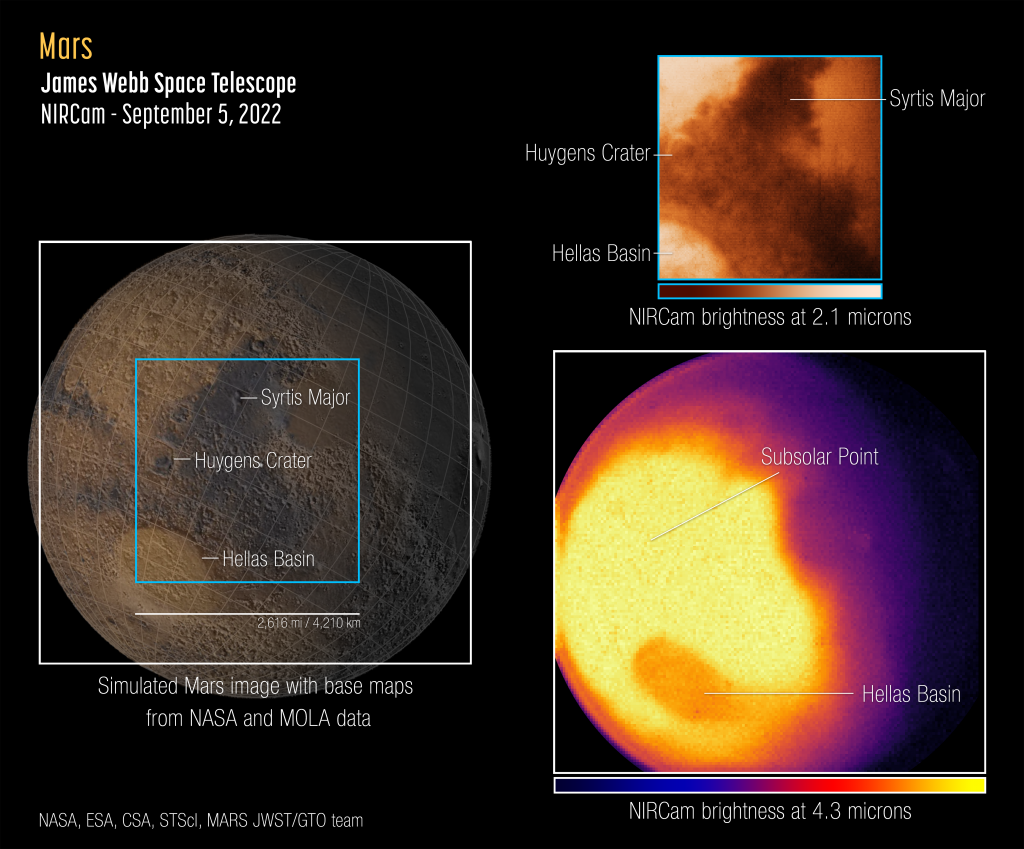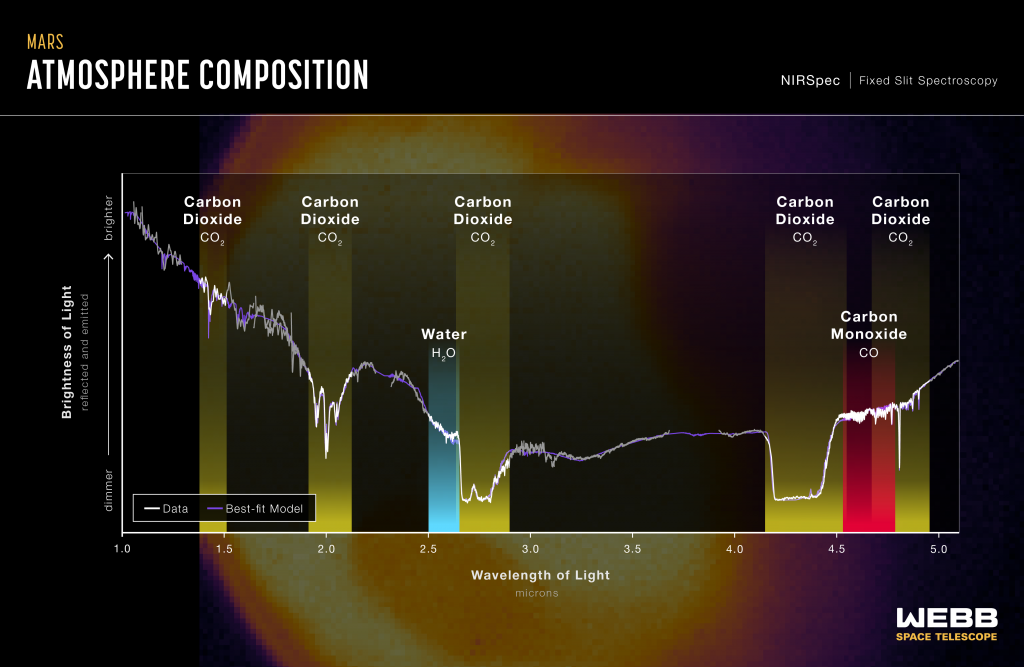JWST Sees Red with First Pictures of Mars
By Sanje Fenkart
Up to now the newest space telescope, JWST, has impressed the astronomical world by taking images of the far-away Universe with unprecedented resolution and detail. Recently, NASA has shifted its focus to our next-door neighbour Mars.
Earth’s little brother is a rather photogenic fellow. It is observed by amateurs, public observatories, professional ground-based and space telescopes. Since 1964, there has been a constant trickle of probes, satellites, landers and rovers which explore the rust-covered world. While the robots send us close-ups from a familiar yet strange world, it’s worthwhile taking a look at the Red Planet with a telescope – even one in your back yard.
For JWST the Mars observation proved to be a little blinding. The telescope is designed to look primarily at faint objects such as exoplanets as well as the first (and hence oldest) stars and galaxies in space. In order for them to be captured, the JWST is equipped with very sensitive instruments and collects as much light as possible.
Mars, however, is close by and very bright – nearly too bright for JWST. Fortunately, a team from NASA’s Goddard Space Flight Center edited the collected data into valuable pictures. The NIRCam (Near-Infrared Camera) managed to take a snapshot of Mars’ surface at two different wavelengths/filters. The first is a zoomed-in picture that shows different surface features like craters, volcanic rocks and dust properties.
The second is a heat map of our neighbour. It marks colder and hotter regions, depending how much heat is given off. As expected, the polar regions are cold, just as the shadowed night side with the distinct terminator (border between day and night). Towards the equator the Sun shines full on (at 2 pm Martian time), heating the planet to an overly bright spot. Curiously, the hottest part exhibits a darker patch. It is an impact structure called “Hellas Basin” with a depth of over 7,000 m (>23,000 ft). There, the pressure changes considerably from top to bottom and consequently affects the atmosphere. And that’s what JWST sees.

Switching instruments, the NIRSpec (Near-Infrared Spectrograph) documented Mars’ atmospheric composition. It found quite the abundance of carbon dioxide (CO2), alongside water (H2O) and carbon monoxide (CO). Yet what scientists are really looking for is methane (CH4). On Earth, methane is one of the most prominent tracers for living organisms, a so-called biomarker. Organisms like us, microbes and plants produce methane. The planet itself can outgas methane if it has geological activity. Otherwise, methane can be brought to a planet by comets too. So far, methane has been found only in the slightest of traces on Mars, with its origin still under discussion. The current findings were obtained during guaranteed time observations (GTO) and they look promising.
JWST will look at Mars many times in the future, whenever an observation window opens. And while there no new results from the JWST spectra on the methane abundance, the spectrographs capability should be able to find even slightest whiffs of it.

Sanje Fenkart took part in the media internship programme at EPSC2022. The programme is supported through the Europlanet 2024 Research Infrastructure (RI) Project, which has received funding European Union’s Horizon 2020 research and innovation programme under grant agreement No 871149.

